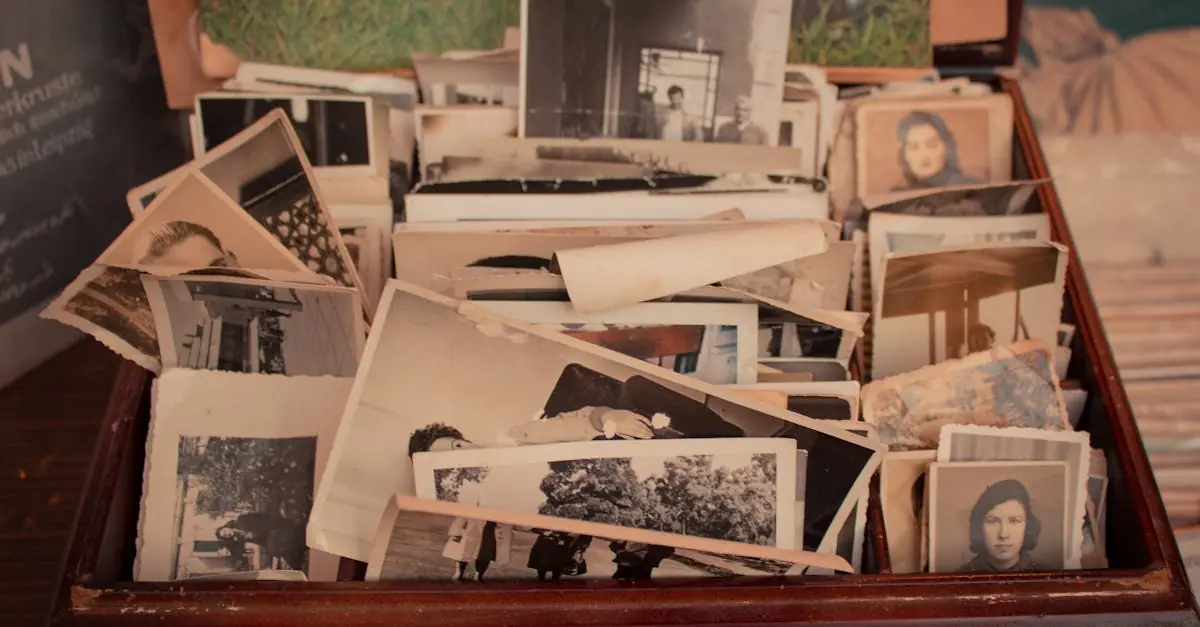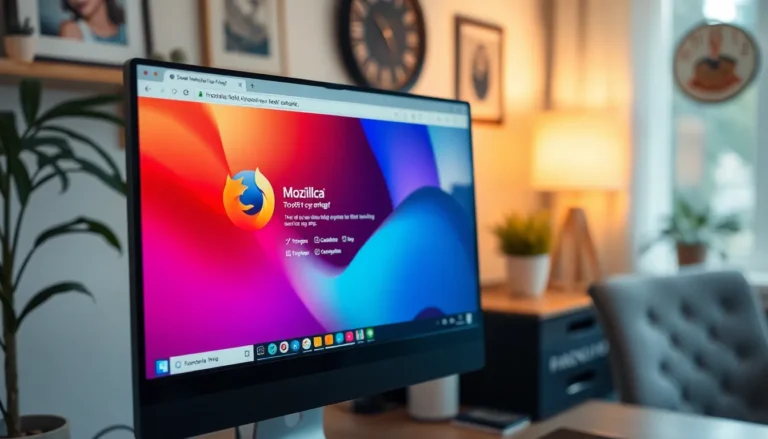Table of Contents
ToggleDigging through an old iPhone can feel like a treasure hunt—except instead of gold doubloons, you’re after those priceless memories captured in photos. Whether it’s that epic vacation or your dog’s most ridiculous face, those snapshots deserve to see the light of day again. But how do you rescue them from the digital abyss?
Overview of the Importance of Retrieving Photos
Retrieving photos from an old iPhone holds significant emotional and personal value. Cherished memories captured in images help people reminisce about important life events. Individuals often forget the moments that made them smile, laugh, or cry, and these photos can serve as a joyful reminder.
The importance extends beyond nostalgia; it encompasses the preservation of family history. Photos document milestones, such as birthdays, weddings, and graduations. Families treasure these moments, passing them down through generations, which strengthens family bonds and heritage.
Retrieving old photos also aids in digital organization. Many individuals accumulate thousands of images on their devices over the years. Sorting these photographs can lead to a more organized digital archive, ensuring easy access to the most significant memories.
Moreover, old iPhone photos may provide a platform for creative projects. Many people enjoy using their favorites in personal projects, such as scrapbooks or digital photo albums. Enhancing creativity enriches personal expression and storytelling.
The act of retrieving photos can become a meaningful ritual in itself. Rediscovering long-lost images brings excitement and satisfaction. Several methods exist for effective recovery, ensuring that individuals can salvage their favorite snapshots seamlessly.
Understanding the significance of retrieving these images motivates individuals to take proactive steps in recovery. Whether it’s reviving lost memories or organizing for the future, the value of these photos is undeniable. Engaging in this process fosters connections, creativity, and cherished reflections on life’s journey.
Methods to Retrieve Photos from Old iPhone
Retrieving photos from an old iPhone involves several effective methods. The following options help unlock precious memories.
Using iCloud to Access Photos
iCloud offers a seamless way to access backed-up photos. First, ensure that the old iPhone has been signed into the same Apple ID that holds the iCloud account. Then, navigate to the Photos app to check for downloadable images. Accessing iCloud.com on a computer provides an alternative method, allowing users to download images directly from the web interface. Photos stored in iCloud remain accessible unless deleted, making it a reliable option for finding lost memories.
Transferring Photos via USB Cable
Using a USB cable enables straightforward photo transfers from the old iPhone to a computer. Connect the device to the computer and open the Photos app or File Explorer, depending on the operating system. For Windows users, selecting the iPhone under This PC prompts the option to import images. Mac users can use the Image Capture app for easier navigation and image management. This method provides a direct way to retrieve high-quality images without relying on cloud services.
Utilizing Third-Party Software
Third-party software solutions specialize in photo recovery, offering another practical option. Applications such as Dr.Fone and Tenorshare UltData provide direct access to recover deleted or inaccessible images from the old iPhone. Downloading and installing the software on a computer initiates the recovery process. Users simply follow on-screen prompts to locate and retrieve lost photos. These programs often come with user-friendly interfaces, making the photo retrieval process simple and effective.
Tips for Successfully Retrieving Photos
Retrieving photos from an old iPhone can be successful with the right strategies. Several key aspects help in this process.
Ensuring Device Compatibility
Ensure the iPhone supports current software updates. Each newer iOS version brings improvements and integration features for photo recovery. The device must also connect seamlessly to the computer or other Apple devices. Compatibility with both Windows and Mac platforms increases accessibility for photo transfers. Additionally, using a Lightning cable is essential for a smooth experience. Its connection stability aids in quick and effective transfers.
Troubleshooting Common Issues
Address common hurdles during the photo retrieval. If the iPhone isn’t recognized by a computer, check cable connections. Confirm that the phone remains unlocked during the connection process. Restarting both the iPhone and the computer often resolves temporary glitches. In instances where photos don’t appear in the Photos app, look into the iCloud settings. Verifying the correct Apple ID and ensuring the Photos toggle is enabled can unlock hidden images. If issues persist, try resetting network settings for improved connectivity.
Retrieving photos from an old iPhone can be a rewarding journey filled with nostalgia and joy. By utilizing methods like iCloud access USB transfers or third-party software solutions individuals can successfully recover their cherished memories.
The process not only helps in organizing digital clutter but also reignites the excitement of rediscovering life’s special moments. Whether it’s reliving a family vacation or a beloved pet’s antics these images hold significant emotional value. Taking the time to recover and preserve these snapshots fosters deeper connections to the past and inspires creativity for future projects. Embracing this task can lead to a fulfilling experience that enriches one’s personal history.





